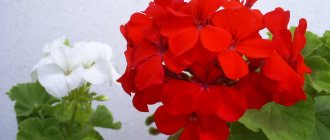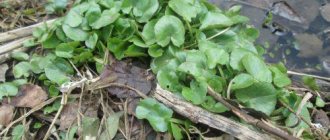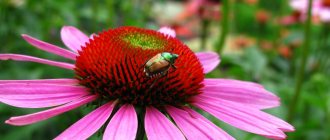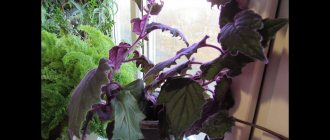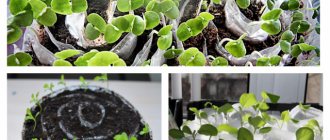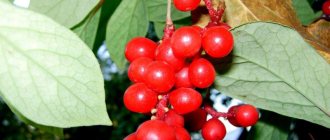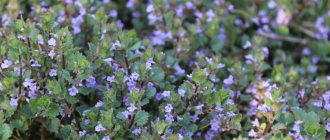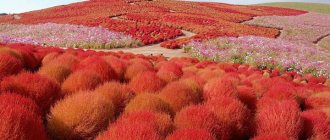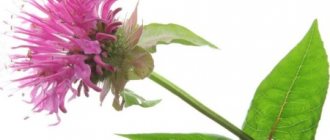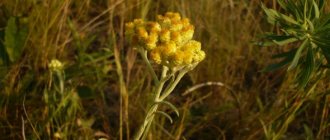Every amateur gardener tries to adequately decorate his plot and make it unique. Creating beauty in your area is not so easy. Nevertheless, desires do not fade, and unique garden masterpieces are created.
Ornamental plants are the best helpers in decorating a personal plot. These include a plant such as kochia.
Kochia coronata pilosa is an ornamental annual foliage plant. She is loved for her beauty and forms, which are changed by the person himself at his own discretion and desire.
Botanical description
Kochia is from the Amaranth family, subfamily Chenopodiaceae, native to China. There are a huge number of species, about 80. The differences are characterized by the size of the plant and its colors.
The plant is a herbaceous shrub. Kochia has an oval cone shape. The stems are erect, strong and flexible. They are often covered with narrow green leaves. The leaves have a slightly curved shape and a soft texture.
Kochia reaches a height of 1 meter. The flowers are spike-shaped, barely noticeable in the fluffy crown of foliage. In autumn the plant turns red and purple.
One of the worthy species is Kochia coronata. Widely used in site design and decorative needs.
It is popularly called “summer cypress”.
Kochia coronata is unpretentious in cultivation and care. From a distance the plant resembles the conifer family. But when you touch the green fluffy creature, you feel softness and tenderness.
Kochia coronata is a kind of summer chameleon. During the season it will delight its owners with different shades. Throughout the warm period, kohia proudly wears bright green decoration. And in the fall the plant dresses up in yellow and crimson tones.
In flower beds, such changes look simply amazing.
Types of kochia
The genus Kochia includes about 80 unpretentious annual and perennial species. In nature, it grows in rocky and semi-desert areas. The plant can reach a height of 130 cm. The bush is covered with thin and long green leaves. In some varieties they turn red or burgundy in the fall. The flowers are unremarkable and not decorative.
About 10 species are used in cultural cultivation.
Kochia hairifolia
One of the most common is Kochia pilosa. This is a densely leafy annual plant up to 120 cm high. The bushes have a beautiful oval shape and grow up to 50–70 cm wide. In autumn they change color to pink or purple.
Childs' Kohia
Childs' Kochia. Forms a compact bush. Good haircut. Grows up to 0.5 m. The leaves are light green and do not change color in autumn.
Kochia dense-flowered . Annual tall species. The bushes grow up to 1.3 m. They differ from other species in that when they bloom, long white fibers form around the base of the flowers.
Kochia wooliflora . A low-growing species with a height of 0.1–0.6 m. The plant is covered with curly hairs of a yellow-green color.
Kochia creeping (bassia prostate)
Kochia creeping (bassia prostate). Low growing perennial plant. The height does not exceed 0.1–0.6 m. It has a powerful root system. Numerous shoots up to 70 cm long rise low and spread along the ground. By the end of summer, the bushes are covered with small inflorescences. Then the fibers on the stems begin to fall off, and the shoots themselves become brown.
Growing Kochia coronata. Care
Kochia coronata is grown either by seedlings or by planting in open ground. The plant does not require excessive attention.
Kochia coronata, planted and cared for according to all the rules, will demonstrate all its possible splendor and grandeur.
The place for growing kochia should be sunny, preferably without drafts. But even in partial shade, kochia will feel quite comfortable.
The average distance between bushes is 50 cm. If you plan to grow a lush single bush with further specific pruning, it is better to increase the distance to at least 1 meter.
When planting borders, the distance between the bushes is 10-15 cm. In this case, a hedge is formed.
Kochia coronata likes soil that is fertile and moderately moist. Does not tolerate drought, begins to droop, lose color and wither.
Kochia also does not like temperature changes. Needs periodic loosening and weeding.
Popular varieties
Summer cypress. It is distinguished by oval-elongated rather high (75 – 90 cm) bushes. Bright green in summer and crimson red in autumn.
Sultan. Low variety (60 cm), round bushes. With the onset of autumn it turns red.
Green Lace. The bushes are elongated, the color is rich green, changing to red in the fall.
Green Forest. A variety with highly branched shoots of light green color. The shape of the bush is regular oval. Grows up to 90-100 cm.
Trichophylla. Medium height variety (50-80 cm). In summer, numerous leaves have an emerald green color, in autumn they are rich burgundy.
Burning bush. Fast growing bushes with small leaves. Green in summer and bright purple in autumn.
Sowing seeds and propagation
The timing of sowing seeds and growing seedlings depends on the local climate. In average climates, seed sowing can begin in late March or early April.
Features of planting kochia coronata for seedlings and caring for sprouts are as follows.
- Choosing the right container or other container. The depth of the box should not be less than 12 cm, since the roots of kochia are quite long and they need enough space for good development.
- Before planting, the container must be thoroughly disinfected. To do this, wash the box with hot soapy water or water with vinegar added.
- The soil should be light, airy and nutritious. Ready-made earthen mixtures are available for sale, but you can prepare them yourself. The mixture is best prepared from peat with the addition of river sand. It's good to add a little humus.
- Before sowing, the soil is treated with a warm solution of potassium permanganate.
- The soil needs to be compacted a little. The seeds are evenly immersed in the soil and lightly sprinkled with a thin layer of humus.
- After planting, the container is covered with a special non-woven material, and greenhouse conditions are created.
It is necessary to regularly moisten the soil using a spray bottle. The soil should not be allowed to dry out, but moderate moisture should not be allowed.
In the fall, you can remove the seeds from the bushes and sow them the next year. Seeds can be stored for two years. But of course, fresh is preferable.
Some gardeners prefer to sow kochia seeds in the fall. The subtlety of such planting lies only in the sowing time. It is not recommended to sow before October. Otherwise, the seeds will germinate ahead of time and freeze.
Self-seeding often occurs, especially with group plantings. It is very comfortable. In the spring many seeds will sprout. All you have to do is thin them out at your own discretion.
Sowing kochia seeds for seedlings
Bags of domestic and foreign varietal seeds are sold in many stores. Seed manufacturing companies recommend sowing kochia seeds for seedlings from March to April 20 and planting the seedlings in the ground in the last ten days of May. That is why we included kochia in the list of crops whose seedlings begin to be prepared in March (article “Sowing flower seeds in March”). Many gardeners follow these recommendations. No one should be embarrassed by the small weight of the seeds in each package (for example, 0.2 g). This is a lot, since the seeds are so small that one gram contains more than 1400 pieces.
Kochia is a plant with which you can safely experiment. Absolutely everything. Even at the seed sowing stage. I have long abandoned the recommended sowing dates. First of all, in March the shortage of space on window sills is already affecting us. In April, it is impossible to place another sowing container on overcrowded window sills. Sowing seeds in open ground in March - early April is not even considered due to the cold weather. Therefore, I sow kochia seeds in early May in a greenhouse or on a seedling bed covered with film, which can be replaced with lutrasil. When sowing, I scatter the seeds over the surface of the bed, then lightly compact the soil and sprinkle a very thin (millimeter) layer of a mixture of sand and peat on top.
Shoots appear surprisingly quickly and amicably. They are very different from those that grow on the windowsill. “Street” ones look like light green spruce shoots. Soon a ribbon of soft fluffy “Christmas trees” appears green on the seedling bed. I water them from a watering can; I don’t have to remove the lutrasil.
When the threat of spring frosts has passed, kochia seedlings are planted in a permanent place on the site (at a distance of 30 cm - 50 cm from each other). I am in no hurry to plant, despite the recommendations of seed companies. Cold weather spoils the emerald color of the seedlings. As the temperature drops, kochia leaves acquire a reddish tint that is inappropriate in spring. There are usually no problems with planting seedlings. By this moment, its height reaches 10 - 20 cm. If a mixture of varieties was sown, then you can clearly see how different all the bushes will be. Some leaves look like short needles, while others resemble threads. Bushes also differ in the degree of pubescence. The plants are already so strong that they can be immediately included in garden compositions. I line up some small bushes in one row, others place them in flower beds, among stones, or plant them in suitable containers. It should be taken into account that in flower pots (balcony boxes, containers, etc.) kochia grows less lush. Even in the summer, it often changes its light green or emerald foliage color to autumn. Forms seeds faster.
Plant the seedlings in holes previously filled with water. Protect the seedlings from the sun for several days after planting. You can throw pieces of lutrasil on it. At midday, kochia seedlings can lose their elasticity and become lethargic. But evening watering returns her to her former slimness.
Seedling care
The germination period of seeds takes up to two weeks. The optimal temperature for growing seedlings is 16 degrees, maybe a little lower. Temperature conditions at this stage are very important. If the rules are not followed, seedlings run the risk of developing blackleg.
Watering is carried out regularly, very carefully, along the edges of the container, so as not to injure weak stems.
When the seedlings grow and 5 leaves form on the stem, you need to pick. 1-3 seedlings are planted in a pot with a small diameter, about 10 cm.
Plant outdoors after all frosts have passed, approximately in the second half of May.
Description of kochia
Kochia is a fast-growing, highly branched plant, its average height is 60-80 cm, but without pruning it can exceed 1 m.
The bush visually resembles a low-growing coniferous tree. Numerous narrow elongated leaves, similar to needles, add grace to the plant. The shape of the crown is also unusual - pyramidal. In this regard, kochia is popularly called summer cypress. There is another, third name - broom grass, since good brooms are knitted from its lush branches. Growing kochia from seeds is not difficult. The grains germinate well, and the seedlings are well accepted.
Attention! Kochia flowers are small and unattractive, practically invisible in the axils of the leaves, and therefore have no decorative value.
Kochia seeds in open ground
If there is no opportunity or desire to grow seedlings, you can sow the seeds directly in open ground.
It's worth waiting for the warm May weather.
We prepare the soil by loosening and adding peat, mullein, compost or humus. After the soil is moderately moistened, it needs to be compacted a little. Seeds are sown sparingly. Sprinkle a thin layer of earth or sand on top.
If possible, it is better to cover the sowing site with non-woven material. You should not use film as a cover; the seeds need air.
Of course, seed germination will take longer than when grown at home or in a greenhouse.
Thinning of seedlings is mandatory.
If the temperature during the day or night drops below +10 degrees, it is better to cover the seedlings.
How to collect Kochia seeds
Kochia broom is an annual plant. Therefore, in order to sow kochia for seedlings or directly into the ground, you need to take fresh seeds every spring. The shrub also reproduces well by self-sowing.
The plant blooms in June. After budding, fruits similar to small nuts are formed. The seeds ripen by the end of summer. It is necessary to collect them in time, before the seed pods crack, so that they do not fall to the ground.
Attention! Sometimes it is enough to cut a few branches with ripened seeds and shake them in the area where you plan to grow them next season. In the spring, kochia is guaranteed to please with friendly shoots, which will simply need to be thinned out.
Diseases of cochia coronea
Kochia seedlings are susceptible to diseases such as blackleg. If a diseased seedling is present in the container, it should be removed immediately. Stop moistening the soil for a while.
If the disease spreads, healthy seedlings are transplanted into another container.
Kochia coronidae is quite resistant to various diseases. Nevertheless, it is recommended to regularly spray kochia bushes in open ground against various pests.
The most dangerous thing for ornamental plants is the spider mite. If there is a small cobweb on the plant, the kochia should be immediately treated with an insecticide.
If the soil is too wet, the trunk may begin to rot. If the problem occurs in the upper part of the plant, you need to trim off the damaged areas. If it rots near the root part, the kochia will have to be removed.
Growing
Kochia is grown from seeds. They can be pre-planted as seedlings or directly in open ground. Kochia is sown for seedlings from the end of March to the end of April. For sowing, prepare shallow boxes that are filled with garden soil and sand. It is advisable to calcinate the soil before use. Moisten the soil and try to evenly distribute small seeds on the surface. They are pressed in with a board and not sprinkled. The container is left in a room with an air temperature of +18…+20°C. In order for seeds to germinate, sunlight must fall on them.
When shoots appear, the temperature should be lowered to +10°C. With the appearance of three true leaves, kochia is planted in small pots. You can plant 3 seedlings in each container with a diameter of 10 cm. At the end of May, when the spring frosts have passed, seedlings 10-15 cm high can be planted in open ground. Kochia loves space, so there should be a distance of 30 cm between the bushes.
It is allowed to sow kochia directly into open ground. This is usually done in the southern regions, in the second half of May. Autumn plantings are possible, then kochia will germinate after the snow melts. In favorable conditions, abundant self-seeding is observed. The seeds can withstand light frosts, but young shoots can die immediately from the cold. Before sowing, the flower bed should be dug up and a small amount of peat and sand added. The seeds are distributed on the surface and carefully watered. Shoots are expected in 10-12 days.
Kochia in design
Kochia coronata is a favorite of landscape designers and gardeners. The plant is widely used in various compositions. Kochia looks perfect in a group mix of its relatives and other flowers.
Combines with various flowers and shrubs. You can verify this by looking at a photo of Kochia coronata.
Used as a mini-fence, decorative fences. Widely used when dividing gardening and cultural zones.
If you create the right contrast between plants, it will turn out just great. It will look unusual, for example, a ring made of kochia coronata with a blue or red center made of other colors.
With the onset of autumn cold weather, kochia begins to wither. You can extend the summer a little and enjoy the greenery at home, for example on the balcony. For 2 months before the onset of serious frosts, the green beauty will delight household members and guests.
A dried bush can be used for decorative purposes, made into ikebana, or added to a bouquet. The result will be an unusual composition.
Recommendations for caring for Bassia
Let us describe several nuances in the process of growing this shrub.
Planting location and soil composition
This plant likes to be in full sun but away from the wind. This is a heat-loving shrub and tolerates heat very well. Choose an area that receives direct sunlight. Shade is possible for 2-3 hours a day. The plant can be planted in loamy and sandy soils that are well drained. Soil pH is neutral. Although it looks more gorgeous on rich soils.
Watering
The drought resistance feature of this crop does not mean the absence of watering in principle. Once a week, especially in hot weather, you should generously irrigate the area with kochia. In rainy autumn, watering should be stopped. But the roots of the plant must breathe. To do this, it is recommended to carry out weeding, at the same time ridding the adjacent area of weeds.
Another significant factor is the absence of stagnant water. If the place for the plant has such disadvantages, then thoughtful drainage is required before planting.
Fertilizer
The plant needs sufficient nutrients. Soil mixed with compost will allow Kochia to develop properly during the growing season. Alternatively, apply a slow-release granular fertilizer at planting time in the spring. They are also used a month after germination.
Pruning Kochia
In addition to standard procedures (watering, loosening), Bassia also responds well to pinching the tips of the upper shoots. This procedure makes the bush thicker. It is also worth paying attention to the shaping pruning of the bush to make it more decorative. Here you can make the most of your imagination and achieve spectacular plant shapes.
Shaping and trimming
Caring for cochia coronata involves trimming the bushes. This procedure allows the branches to grow evenly and proportionally.
Various geometric shapes and more are also created.
A haircut can be done every 2 weeks. Young shoots need to be pinched regularly. This will provide the plant with lushness.
After cutting, the plant needs feeding.
It’s easy to practice and get your hands on kochia before cutting conifers, especially for beginners.
There are many different options for transforming a garden plot using trimmed kochia.
You can create borders, mini-fences of rectangular or conical shape. A lone bush can be designed in the form of a square, circle or, for example, a butterfly. It will be very impressive and varied. Kochia will look unusual in the form of a real spruce.
The use of various types of kochia in landscape design and gardening
When decorating gardens, cottages and various areas, Kochia broom is often used to create a “green” hedge. To do this, plants are planted in two rows, slightly shifted in relation to each other. Moreover, the distance between the bushes should be 15-20 cm, and between the rows 15 cm. With this planting, the hedge turns out dense and beautiful.
Kochia broom is also often used for planting in a variety of flower and rocky compositions, as well as on alpine hills. When planted in groups, combinations of multi-colored varieties are very beautiful.
Kochia hairy (the garden form of K. broom) is used both as a tapeworm (single plant) and to create a “green” hedge. It is interesting that in winter, when the plants are completely dry, this hedge retains its shape well and looks beautiful against the background of snow cover. With the onset of spring, old bushes are removed and young plants are planted again.
By cutting kohia, you can give it almost any shape; for example, the plants are very decorative in the form of bright green balls.
A hedge created from Childs kochia also turns out to be quite dense. The plants in it are planted staggered, the distance between them in a row is about 30 cm. Childs' Kochia also looks great in solitary plantings. Bushes of this species are very unpretentious to growing conditions.
